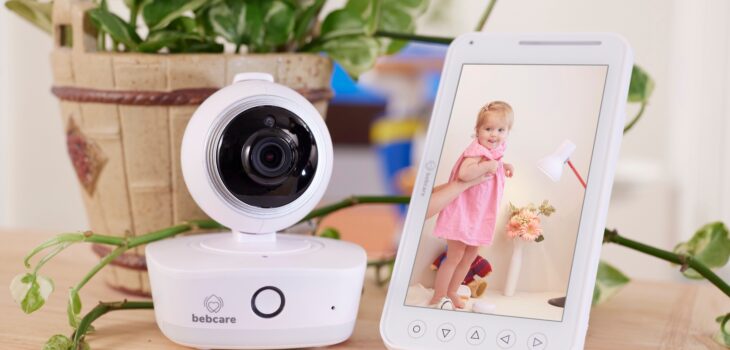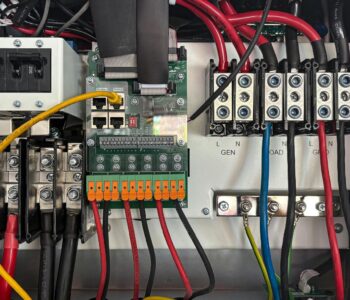 Technology
Technology
Top Reasons Parents Are Switching to Baby Monitors with…
As a parent, your top priority is your child’s safety and well-being—especially when they’re sleeping. With so many baby monitor options on the market, the decision can feel overwhelming. While many modern monitors rely on WiFi and smart apps, a growing number of parents are opting for simpler, more secure alternatives. In this post, we’ll explore why baby monitors with no WiFi are becoming the go-to choice for families who value privacy, security, and ease of use.
1. Privacy and Security Concerns
One of the most significant reasons parents are moving away from WiFi-enabled baby monitors is due to privacy concerns. Internet-connected devices are vulnerable to hacking, and there have been numerous reported incidents where baby monitors were accessed by unauthorized individuals. This is not just unsettling—it’s downright frightening. With a monitor that doesn’t use WiFi, there’s no risk of someone accessing the camera feed remotely, making it a far safer choice for parents who prioritize their family’s privacy.
2. No Internet? No Problem.
WiFi baby monitors are entirely dependent on a stable internet connection. If your internet goes down or becomes unstable, you lose access to your monitor. This can be particularly frustrating during power outages or if your service provider has issues. A baby monitor no WiFi operates on a dedicated signal, such as DECT or FHSS, allowing it to function independently of your home network. This makes it much more reliable, especially in emergencies or rural areas with spotty internet coverage.
3. Easier to Set Up and Use
Parents today are busy. The last thing they need is a baby monitor that requires downloading apps, creating user accounts, and fiddling with complicated settings. Monitors that don’t rely on WiFi typically offer plug-and-play functionality—simply turn them on, and they’re ready to go. This ease of use is one of the most appreciated features among first-time parents. There’s no steep learning curve, and you don’t need to be tech-savvy to ensure your baby is monitored effectively.
4. Reduced Exposure to Electromagnetic Frequencies (EMF)
Health-conscious parents are increasingly aware of the possible risks associated with prolonged exposure to EMF radiation, which can be emitted by wireless devices. WiFi-enabled baby monitors continuously transmit data, potentially exposing babies to EMF during their most vulnerable developmental stages. Monitors that use non-WiFi signals emit significantly lower radiation and are often designed with safety in mind—some even include eco or VOX modes to reduce transmission when the baby is sleeping quietly. https://vibrantlivingblog.com/
While the science around EMF exposure is still evolving, many parents choose to err on the side of caution. A non-WiFi monitor offers peace of mind by reducing your child’s exposure to unnecessary wireless signals while still providing reliable monitoring.
5. Budget-Friendly and Durable
Technology tends to come at a price, and baby monitors are no exception. WiFi-enabled monitors with HD video streaming, smartphone compatibility, and cloud storage often come with a hefty price tag and ongoing subscription fees. In contrast, non-WiFi baby monitors are generally more affordable upfront and don’t require any monthly fees. They’re built for durability and functionality rather than bells and whistles, which means fewer parts that could fail over time.
Another benefit is that these devices often have better battery life, especially when they rely on low-energy transmissions or have power-saving features. For parents looking for a dependable, long-term solution without unnecessary add-ons, a baby monitor no WiFi is a smart and cost-effective investment.
6. Encouraging Mindful Parenting
While technology can enhance convenience, it can also become a distraction. WiFi monitors often come with apps that include social media-style feeds, notifications, and extra features that can pull your attention away from your child. A simpler monitor keeps the focus where it should be—on your baby. Without an app constantly pinging your phone, you’re more likely to engage directly with your child’s needs rather than constantly checking a screen.
Moreover, some parents find that non-WiFi monitors encourage a healthier balance between technology and parenting. These devices provide just the essentials—sound and video—without the digital clutter. This can help parents feel more present and less overwhelmed by data and alerts.
Conclusion
When it comes to monitoring your baby, the safest and most practical option isn’t always the one packed with the most features. For many parents, peace of mind comes from knowing their child’s monitor isn’t vulnerable to hacking, doesn’t rely on an internet connection, and is simple to use. Whether you’re a first-time parent or looking for a more reliable solution, switching to a monitor without WiFi could be the best decision you make for your growing family.
For parents seeking a secure, user-friendly, and thoughtfully designed option, Bebcare offers some of the most trusted baby monitors with no WiFi, combining safety with smart functionality for modern families.








